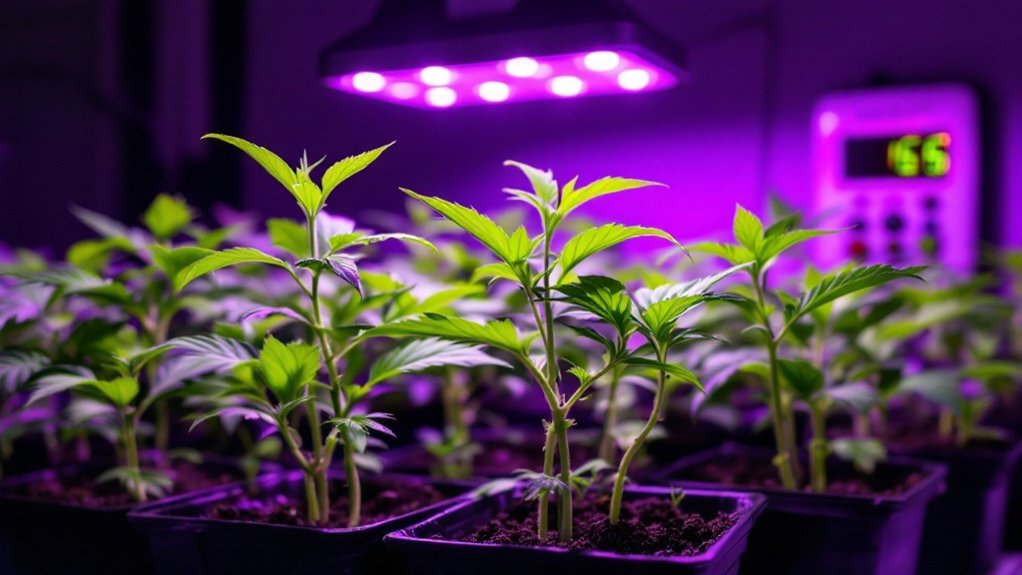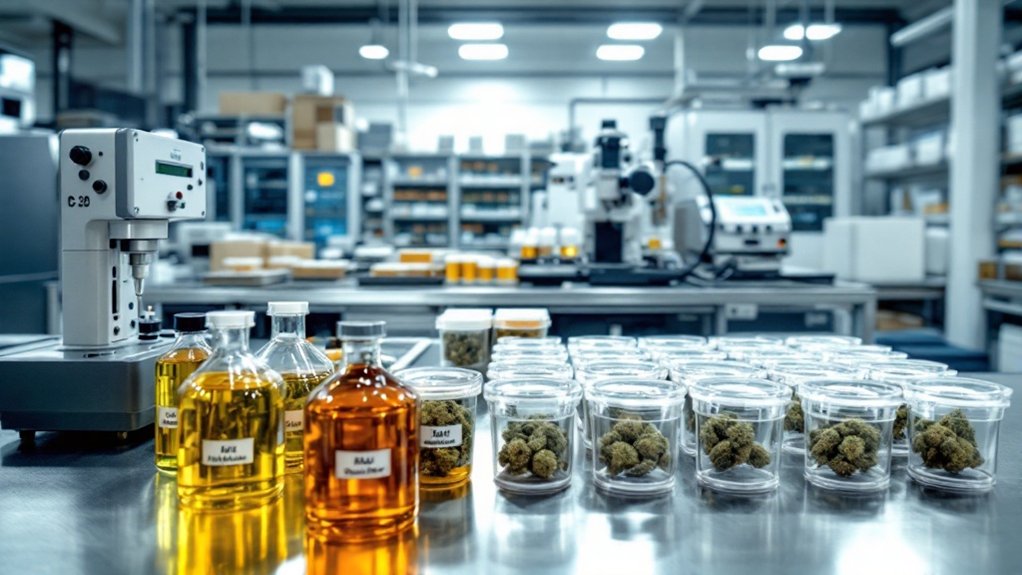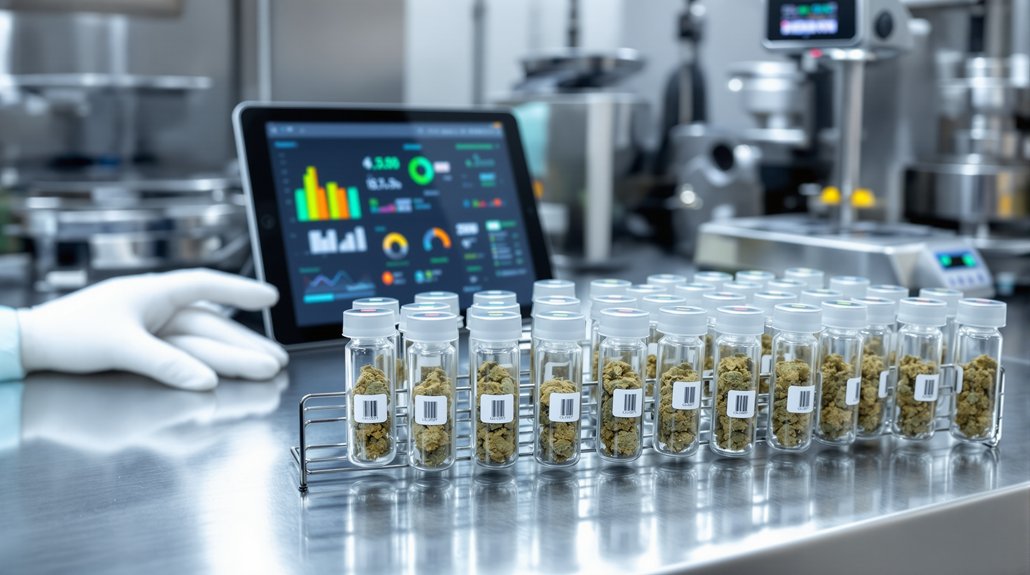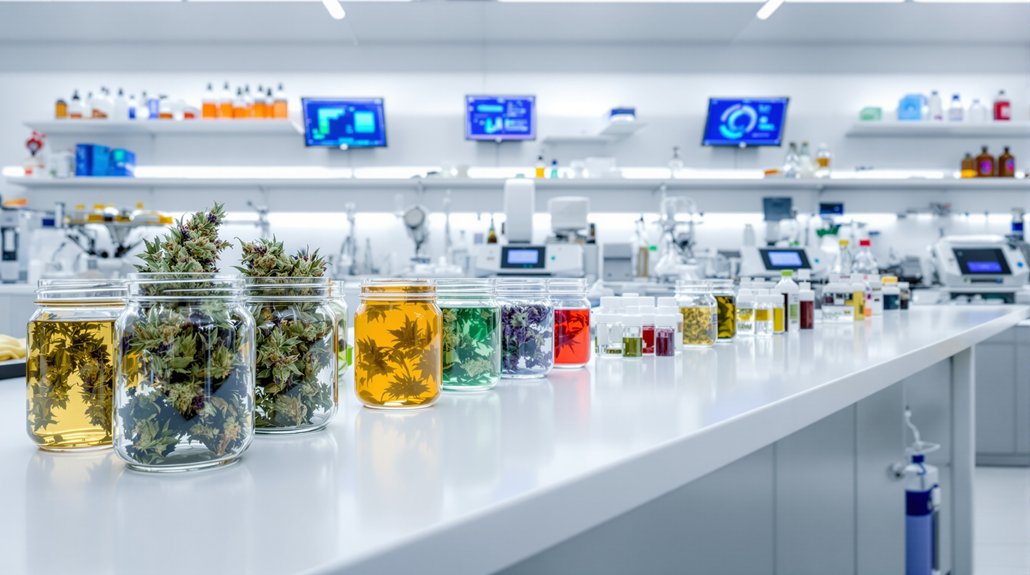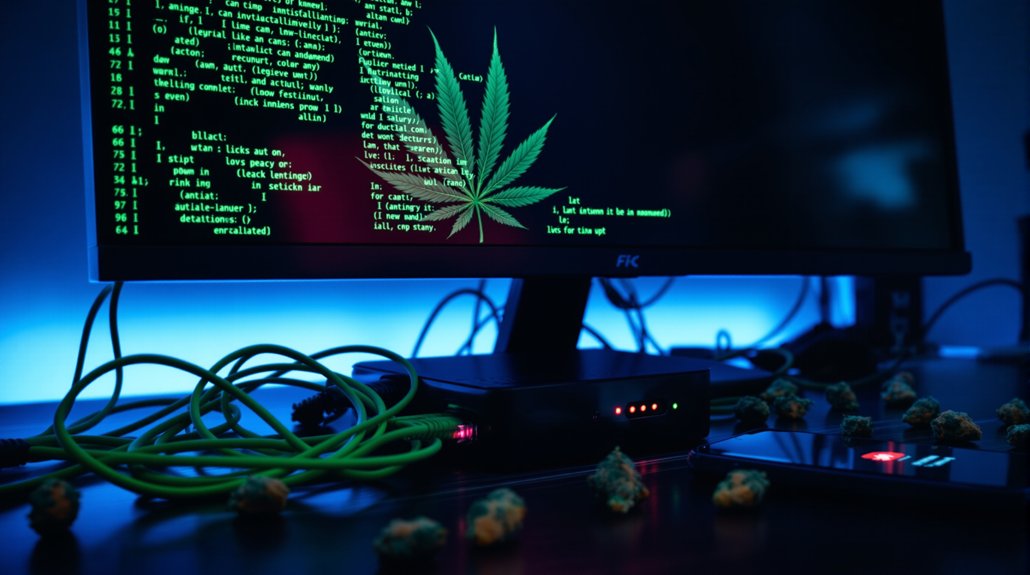Seedlings thrive when provided 14-16 hours of grow light daily, with most varieties requiring at least 8 hours of darkness for metabolic processes. Fluorescent or LED systems offer gentle illumination that prevents legginess while supporting strong stem development. Setting timers guarantees consistent light cycles, preventing the stunted growth and discoloration that results from improper duration. The right lighting schedule establishes the foundation for robust plant development from day one.
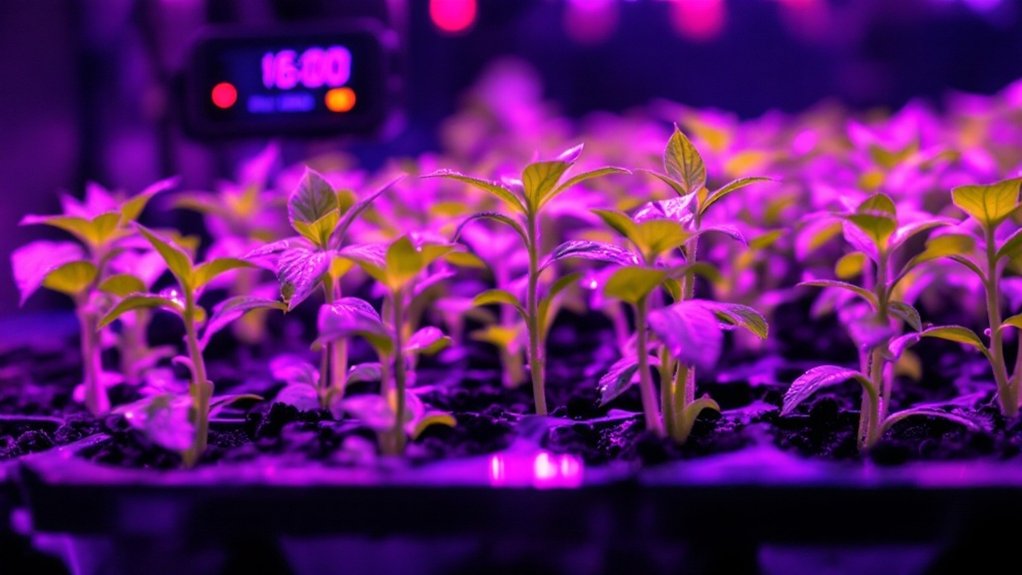
The proper timing and duration of artificial light exposure is essential for developing healthy, robust seedlings indoors. Most seedlings require between 14-16 hours of light daily to achieve ideal growth rates and structural development. Research indicates that photoperiods shorter than 16 hours can greatly impede growth progress, while some plant varieties actually benefit from even longer exposure periods. Tomato seedlings, for instance, may require up to 22 hours under fluorescent lighting compared to just 5 hours in direct sunlight due to intensity differences. The Daily Light Integral measurement helps gardeners determine exactly how much light their seedlings are receiving throughout an entire day, ensuring optimal growth conditions. Additionally, optimizing light schedules, similar to photoperiod cannabis plants, can lead to improved seedling health and vigor.
Light positioning plays an equally important role in seedling development. Newly sprouted seedlings benefit from grow lights positioned 2-4 inches above their tops, with this distance gradually increasing as plants develop. Proper positioning prevents the common problem of legginess—characterized by weak, elongated stems—which occurs when seedlings stretch toward insufficient light sources. If stretching is observed, lowering the light fixture or increasing intensity can quickly remedy the situation.
Position grow lights 2-4 inches above seedlings to prevent leggy, weak stems. Adjust height upward as plants grow for optimal development.
Selecting appropriate lighting technology greatly impacts seedling health. Fluorescent and LED grow lights are highly recommended for seedling stages, providing gentle yet effective illumination. HID lighting systems, while powerful, often produce excessive intensity and heat that can damage delicate young plants. Different light spectrums impact various aspects of plant development, affecting both root formation and overall structural integrity.
Consistent timing of light cycles enhances seedling growth rates. Many growers employ outlet timers to maintain precise scheduling, eliminating human error and providing seedlings with dependable light patterns. Despite some recommendations for continuous light exposure, plants generally benefit from dark periods. These darkness intervals enable vital metabolic processes where plants convert stored glucose into growth energy and perform essential tissue repair. Ensuring seedlings receive at least 8 hours of darkness is critical for optimal physiological development and long-term plant health.
Improper light duration manifests in several observable symptoms. Insufficient light typically results in leggy, weak-stemmed seedlings with excessive stretching toward the light source. Stunted development and slow growth rates often indicate inadequate light duration, while discolored leaves may signal light stress from improper timing or intensity.
Plants require immediate light exposure upon emerging from soil, though seeds should remain in darkness during germination.
As seedlings adapt to vegetative growth stages, light requirements evolve accordingly. Growers must make gradual adjustments to duration and intensity as plants mature, with different species often requiring customized schedules for ideal development. Maintaining appropriate light cycles throughout all growth phases establishes the foundation for successful indoor cultivation.
Looking for more information about commercial growing? Check out our Guide to Cannabis Cultivation: Technology & Innovation.
Frequently Asked Questions
Can Grow Lights Burn or Damage Seedlings?
Yes, grow lights can burn and damage seedlings when used improperly. Excessive light intensity, particularly when fixtures are positioned too close to delicate foliage, can cause leaf yellowing, white bleached patches, and crispy edges.
The risk increases with high-wattage lights, poor ventilation, and continuous exposure without dark periods. Heat generated by certain light types, especially HID fixtures and lower-quality LEDs, compounds the problem by creating additional thermal stress on vulnerable young plants.
What Color Spectrum Is Best for Seedling Growth?
For ideal seedling growth, a combination of blue and red light spectrums provides the most benefits.
Blue light (400-500 nm) promotes chlorophyll production, compact growth, and sturdy stem development in young seedlings.
Red light (600-700 nm) supports root formation and contributes to photosynthetic energy production.
Full-spectrum lighting, which mimics natural sunlight by combining various wavelengths, offers the most balanced approach for thorough seedling development through all growth stages.
How Far Should Grow Lights Be Positioned Above Seedlings?
Grow light positioning varies greatly based on the type and power of the light source.
LEDs typically require 8-12 inches for standard bars, while high-powered 1000W models need up to 46 inches of clearance. Medium-powered LEDs (600W) should be placed about 38 inches above seedlings, and lower-powered units (200W) around 20 inches.
Fluorescent lights, particularly T5 fixtures, perform best when positioned much closer—approximately 5-6 inches from seedling tops—due to their lower light intensity.
Are LED Grow Lights Better Than Fluorescent for Seedlings?
LED grow lights offer several advantages over fluorescent options for seedlings, including energy efficiency, optimized light spectra, and reduced heat emission.
Though LEDs have higher initial costs, their longer lifespan and lower energy consumption provide better long-term value.
Fluorescent lights remain viable alternatives with broader light spectra and lower purchase prices.
The ultimate choice depends on specific growing conditions, plant varieties, and whether factors like energy efficiency or initial investment are prioritized.
